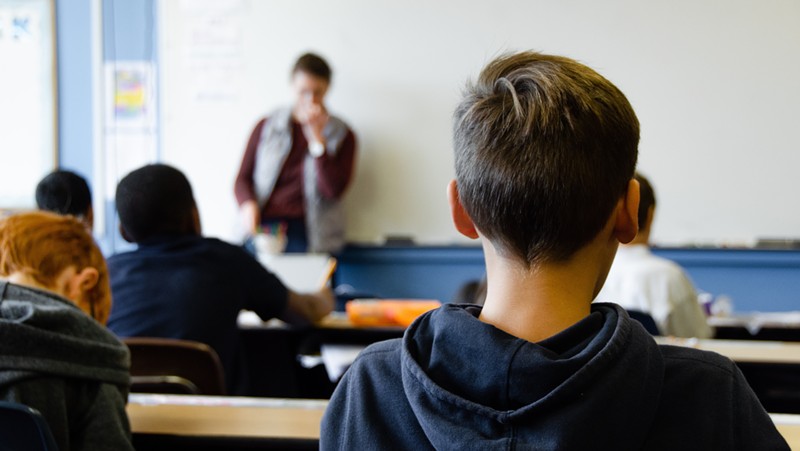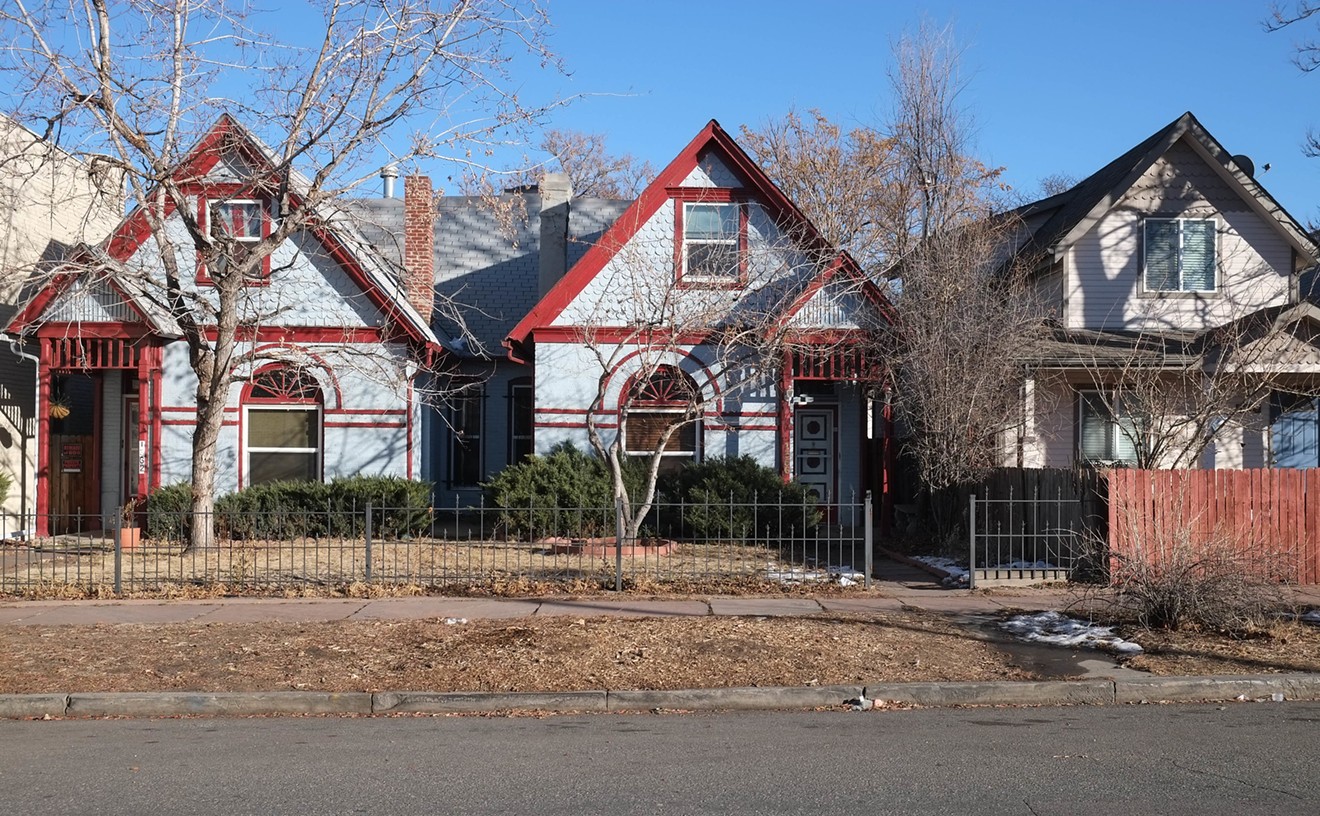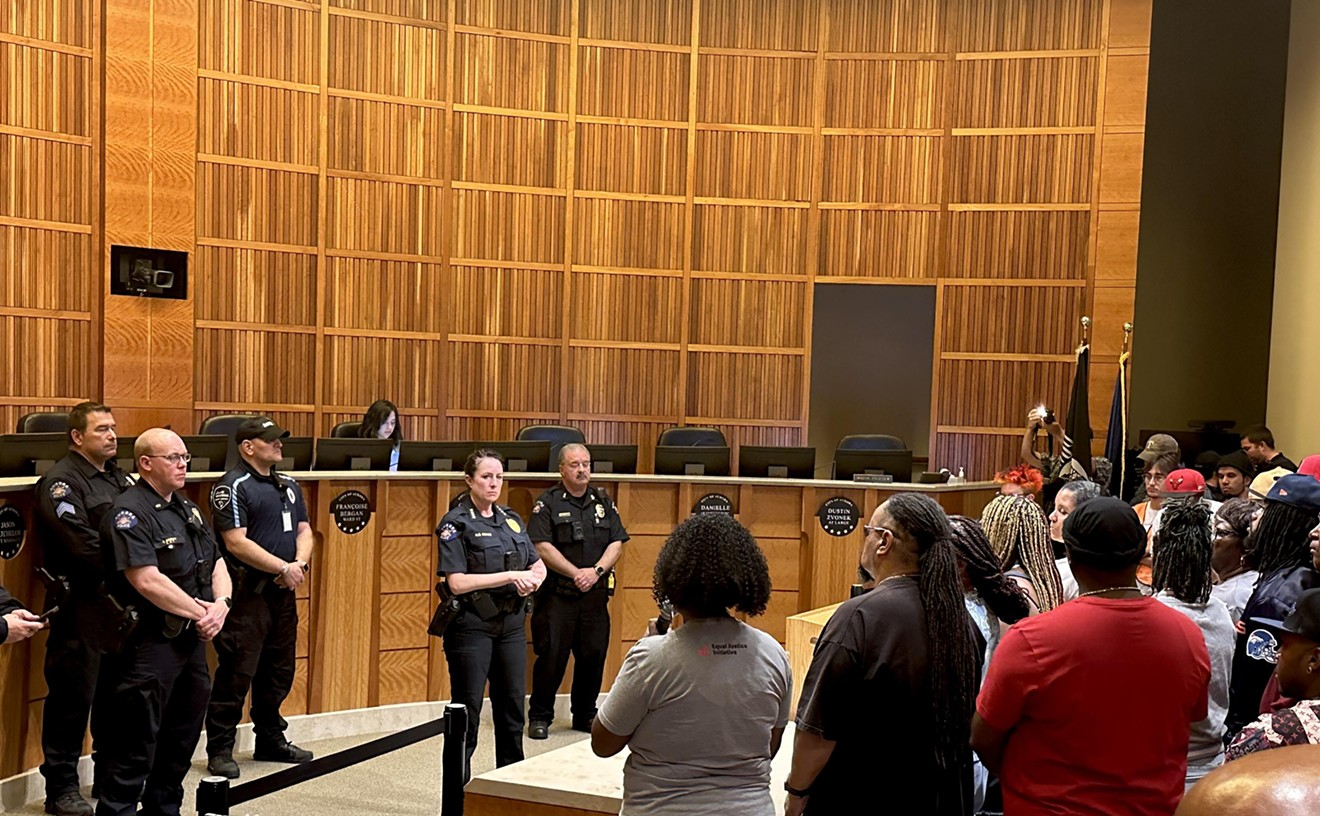Denver Public Schools has announced that instruction for the 2020-2021 academic year will take place remotely until at least October 16 because of concerns over COVID-19. But once in-person learning starts up again, rooms could be crowded. According to an internal DPS document obtained by Westword, the district is planning to allow up to thirty students per class, with a social distance of just three feet for grades six through twelve.
This prospect is alarming to numerous teachers who spoke to Westword on the promise of anonymity. One maintains that "allowing thirty students in a classroom together, within three feet of each other, is ridiculous. Students will not be able to keep social distancing measures, nor can they be expected to make it through a full school day with a mask on. When you actually start to think through all of the details, it becomes glaringly obvious how impossible it is to plan effectively for a safe return. Classrooms are small, and full of desks and furniture. How do we handle bathrooms safely? Or lunch?"
"I can see how they could come up with health guidelines that are so strict they're impossible to actually meet," adds another. "And I can see how they could come up with health guidelines that are possible to meet but aren't safe. But this seems like a bizarre blend of impossible guidelines that don't seem safe at all."
The document focuses on so-called "cohort design elements." According to school reopening guidelines established by the Colorado Department of Education, cohorting involves dividing up students into small groups that will learn and play together to limit the spread of the infection. Theoretically, only the members of a specific cohort must be quarantined should a member test positive for COVID-19, rather than the entire student body.
"Cohorting significantly reduces the number of students and staff who will need to be excluded in the event of a case of COVID-19 in a school by limiting the number of close contacts of each individual (all of whom will need to be quarantined up to fourteen days if they have close contact with a case)," the CDE says.
The DPS cohort design document calls for the "total exposure group not to exceed thirty" at the secondary level, and says that "students in grades 6-12 should be socially distanced a minimum of three feet." It then adds: "It is assumed that in most secondary classrooms, this social distancing requirement can be met with class sizes of thirty, but this should be confirmed for your building. If secondary leaders consider it best for their community, they can group students in smaller cohorts and have them participate in multiple cohorts, provided that the total exposure group does not exceed thirty."
This last proviso has led to mixed responses from educators with whom we've spoken. At the high school level, students regularly take part in several classes, often with completely different peers in each. So if an individual is taking three classes, does that mean exposure to as many as ninety other students per day? And if not, how can students take all the courses they want or need if they only have 29 other students with whom they can interact?
If students are put together with multiples of thirty, the first teacher believes, "this defeats the entire purpose of a cohort model, which should allow a cohort that contracts the virus to be isolated and removed from school. The current plan for reopening secondary schools would make it impossible to contain or even trace an outbreak. This endangers all of our students, staff, their families, and effectively, the whole city."
At least one DPS administrator is interpreting the cohort size limits in the broader sense, meaning potential multiples of thirty, the second educator confirms.
These guidelines could shift in the weeks prior to October 16. Indeed, one of the teachers we spoke with says that a previous version had classroom limits of fifteen students at the secondary level, along with social distancing of six feet. But as it is, instructors feel that the current version raises risks for everyone at school — kids and adults alike.
We've reached out to DPS for comment but have not yet gotten a response. Click to read the Denver Public Schools cohort design document.
[
{
"name": "Air - MediumRectangle - Inline Content - Mobile Display Size",
"component": "12017618",
"insertPoint": "2",
"requiredCountToDisplay": "2",
"watchElement": ".fdn-content-body",
"astAdList": [
{
"adType": "rectangle",
"displayTargets": "mobile"
}
]
},{
"name": "Editor Picks",
"component": "17242653",
"insertPoint": "4",
"requiredCountToDisplay": "1",
"watchElement": ".fdn-content-body",
"astAdList": [
{
"adType": "rectangle",
"displayTargets": "desktop|tablet"
},{
"adType": "rectangle",
"displayTargets": "desktop|tablet|mobile"
}
]
},{
"name": "Inline Links",
"component": "18838239",
"insertPoint": "8th",
"startingPoint": 8,
"requiredCountToDisplay": "7",
"maxInsertions": 25
},{
"name": "Air - MediumRectangle - Combo - Inline Content",
"component": "17261320",
"insertPoint": "8th",
"startingPoint": 8,
"requiredCountToDisplay": "7",
"maxInsertions": 25,
"watchElement": ".fdn-content-body",
"astAdList": [
{
"adType": "rectangle",
"displayTargets": "desktop|tablet"
},{
"adType": "rectangle",
"displayTargets": "desktop|tablet|mobile"
}
]
},{
"name": "Inline Links",
"component": "18838239",
"insertPoint": "8th",
"startingPoint": 12,
"requiredCountToDisplay": "11",
"maxInsertions": 25
},{
"name": "Air - Leaderboard Tower - Combo - Inline Content",
"component": "17261321",
"insertPoint": "8th",
"startingPoint": 12,
"requiredCountToDisplay": "11",
"maxInsertions": 25,
"watchElement": ".fdn-content-body",
"astAdList": [
{
"adType": "leaderboardInlineContent",
"displayTargets": "desktop|tablet"
},{
"adType": "tower",
"displayTargets": "mobile"
}
]
}
]












